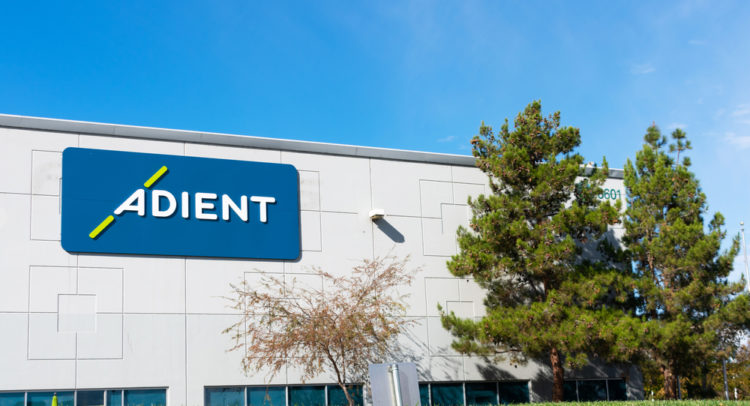Adient (ADNT) is an American multinational automotive seating manufacturer headquartered in Ireland. It has a presence in 33 countries and operates 208 manufacturing sites globally. It recently ended its joint venture with Yanfeng Automotive Trim Systems to allow it to drive its China strategy independently.
For Fiscal Q4 2021, Adient reported an adjusted loss of $0.24 per share, beating the consensus-estimated loss of $0.50 per share. It ended the quarter with $1.5 billion in cash.
The company explains that its results have recently been adversely impacted by rising commodity prices and a turbulent production environment caused by global semiconductor supply-chain disruptions. The company expects the headwinds to persist into Fiscal 2022.
With this in mind, we used TipRanks to take a look at the newly added risk factors for Adient.
Risk Factors
According to the new TipRanks Risk Factors tool, Adient’s main risk category is Finance and Corporate, representing 30% of the total 40 risks identified for the stock. Legal and Regulatory and Macro and Political are the next two major risk categories at 25% and 15% of the total risks, respectively. Adient recently updated its profile with three new risk factors.
The company informs investors that federal, state, and local governments have issued COVID-19 vaccine and testing mandates that apply to some of its employees. It explains that complying with the mandates may result in additional costs. Further, it cautions that the requirements may result in the loss of critically skilled personnel and make it difficult to meet future labor needs. Therefore, Adient warns that the mandates could have a material adverse impact on its business, operating results, and financial condition.
Adient tells investors that the COVID-19 pandemic has caused it to adjust its workforce practices. For example, it has allowed the majority of its employees to work from home. The company is reopening its offices and is considering adopting a hybrid work environment where employees will be able to work from its offices or remotely. However, it cautions that the hybrid work model may bring some challenges, such as employees at the office being unable to communicate properly with their remote colleagues. If the hybrid work model is not successful, Adient warns that it could lose some employees and productivity may decrease, which could adversely affect its business.
The company cautions that it could struggle to obtain additional financing in the future. It mentions that the ongoing supply-chain disruptions and potential decrease in customer orders could result in liquidity challenges.
The Finance and Corporate risk factor’s sector average is 33%, compared to Adient’s 30%. Adient’s stock has gained about 44% over the past year.

Analysts’ Take
In December, Wells Fargo analyst Colin Langan maintained a Buy rating on Adient stock and raised the price target to $54 from $51. Langan’s new price target suggests 11.50% upside potential.
Consensus among analysts is a Hold based on 2 Buys, 2 Holds, and 1 Sell. The average Adient price target of $46 implies 5.02% downside potential to current levels.

Download the mobile app now, available on iOS and Android.
Related News:
CNH Industrial Completes Demerger with Iveco Group; Shares Rise
Southwest Airlines, SkyWest Cancel Flights Amid Rising Omicron & Staff Shortages
NESR Bags $100M Contract Awards in North Africa









